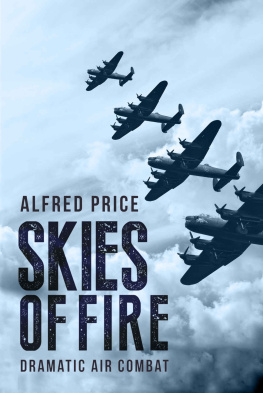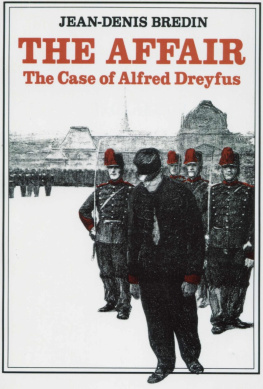Alfred Price - Skies of Fire
Here you can read online Alfred Price - Skies of Fire full text of the book (entire story) in english for free. Download pdf and epub, get meaning, cover and reviews about this ebook. year: 2015, publisher: Lume Books, genre: Non-fiction. Description of the work, (preface) as well as reviews are available. Best literature library LitArk.com created for fans of good reading and offers a wide selection of genres:
Romance novel
Science fiction
Adventure
Detective
Science
History
Home and family
Prose
Art
Politics
Computer
Non-fiction
Religion
Business
Children
Humor
Choose a favorite category and find really read worthwhile books. Enjoy immersion in the world of imagination, feel the emotions of the characters or learn something new for yourself, make an fascinating discovery.
- Book:Skies of Fire
- Author:
- Publisher:Lume Books
- Genre:
- Year:2015
- Rating:3 / 5
- Favourites:Add to favourites
- Your mark:
- 60
- 1
- 2
- 3
- 4
- 5
Skies of Fire: summary, description and annotation
We offer to read an annotation, description, summary or preface (depends on what the author of the book "Skies of Fire" wrote himself). If you haven't found the necessary information about the book — write in the comments, we will try to find it.
Skies of Fire — read online for free the complete book (whole text) full work
Below is the text of the book, divided by pages. System saving the place of the last page read, allows you to conveniently read the book "Skies of Fire" online for free, without having to search again every time where you left off. Put a bookmark, and you can go to the page where you finished reading at any time.
Font size:
Interval:
Bookmark:
Skies of Fire
Alfred Price
Copyright Alfred Price 2002
The right of Alfred Price to be identified as the author of this work has been asserted by him in accordance with the Copyright, Designs and Patents Act, 1988.
First published in the United Kingdom in 2002 by Cassell & Co.
This edition published in 2018 by Lume Books.
For Simon
Table of Contents
Introduction
Skies of Fire is a companion volume to my earlier books Sky Battles and Sky Warriors . As in those previous books, it has been my aim to illustrate the evolution of aerial warfare by looking at a series of actions spread over its history. In this case the period covered is almost nine decades, from the Italian-Turkish war in 1911 to the Kosovo conflict in 1999. Twenty-two detailed accounts portray the multi-faceted nature of the air weapon during that period, and show the many different ways aircraft are employed in time of war. They also give an insight on how the various operational roles fit together to give this aspect of military operations such a formidable capability.
Chapter One , Warfare Enters the Third Dimension describes the first combat air operations flown by heavier-than-air machines. These took place in 1911 and 1912, when the Italian air expeditionary force supported that nations army during its campaign to wrest Libya from Turkish control. Using flimsy planes and even more flimsy dirigibles, the Italian pilots flew almost daily air reconnaissance missions that made a significant contribution to the Italian victory. As Italian ground force commanders soon came to appreciate, their possession of an effective aerial reconnaissance capability prevented the enemy achieving surprise when assembling forces to mount an attack. The Italians faced no such constraint and, moreover, thanks to information provided by aerial reconnaissance, their commanders could select the weak points in the enemy defences and attack there. A further important use of planes and captive balloons during those initial actions was that of correcting the fall of artillery rounds to achieve the destruction of targets. Thus, while the aeroplanes, dirigibles and captive balloons had no direct impact on the enemy, their indirect support had far-reaching effects.
Chapter Two , Geoffrey De Havillands Multi-role Masterpiece, looks in detail at some of the wartime operations carried out by the remarkable British De Havilland 4 aircraft. The type entered operational service in 1917, and its operations show how far the tactics and techniques of air warfare had advanced during the previous six years. Compared with the slow and flimsy Blriot monoplanes flown by the Italian pilots, the D.H.4 was more than twice as fast, it weighed six times as much and carried a bomb load five times heavier. Carrying an observer to assist with navigation and operate the rear gun, D.H.4s delivered numerous bombing attacks. The aircraft was even more successful as a high-altitude photographic reconnaissance aircraft, often reaching altitudes above 23,000ft. Near the end of the war the D.H.4s superb altitude performance was exploited to make it a feared opponent for Zeppelins attacking targets in England.
It was also during the First World War that the Royal Navy devoted considerable effort to experiments aimed at operating landplanes from the decks of ships at sea. Early in 1918 HMS Furious re-entered service with flat decks for that purpose mounted forward and aft of her bridge and funnel. Tests showed that, although land planes could take off from the foredeck without difficulty, landing on the rear deck after a mission was impracticable. Nevertheless, despite that imperfection, Furious would go into action in her new role.
Chapter Three , The First Successful Carrier Air Strike, describes the daring attack launched from Furious on the important Zeppelin base at Tondern in northern Germany in the summer of 1918. After delivering their attack the pilots were briefed to alight on the water close to one of the escorting destroyers, which would pick them up. Six Sopwith Camel scouts, each carrying two 50lb bombs, attacked Tondern where they destroyed two Zeppelins on the ground. The Tondern attack was the first successful operation ever conducted by carrier-based aircraft against a land target. In addition, it was one of the very few actions during the First World War where air-dropped bombs inflicted major damage to a military target.
In Chapter Four the account shifts to the Second World War and 1940. The multifarious literature on air warfare contains plenty of accounts of air units that are successful in battle. Yet one sides victory is the other sides defeat. Thirteen Days in August describes the fate of an unfortunate Spitfire squadron during the Battle of Britain. No 266 Squadron suffered a short but devastating run of bad luck, which forced it to withdraw from combat after a few days in combat.
The most obvious way to bring down an attacking bomber is by the use of fighter planes or anti-aircraft guns. Yet another method is to cause the bomber to become lost and run short of fuel, by injecting interference into its electronic navigation systems. During the first two years of the Second World War, bombers engaged in daylight attacks penetrating deep into enemy territory were liable to incur prohibitively heavy losses. That forced them to operate either at night or during spells of poor weather. And that, in turn, meant that crews had to place reliance on electronic systems to find their targets and return to their base after the mission. To exploit that fact the Royal Air Force formed No 80 Wing, a ground organization with the specific role of causing interference to the German electronic navigation aids. Chapter Five , One Way to Down a Dornier, provides a glimpse into one successful use of electronic trickery which led a Dornier 217 to become thoroughly lost and crash-land in England.
Chapter Six , Spitfires to Malta, describes the dramatic operations to deliver fighters to that beleaguered island during the spring and summer of 1942. The only way to do so was to launch them from the decks of aircraft carriers. The Spitfire had originally been designed as a short-range interceptor. Fitted with a 90-gallon drop tank under the fuselage, these single-seat fighters had to fly a distance equivalent to that from London to Prague in order to reach the island.
Chapter Seven , High-altitude Combat, describes the highest aerial engagement of the Second World War and one of the highest engagements of all time. The participants were a specially modified Spitfire IX fighter and a Junkers 86R bomber designed for ultra-high-altitude operations. At one stage in the encounter the contestants climbed above 43,000ft during that combat in September 1942.
Chapter Eight , The Twenty-fifth Mission, gives one pilots recollections of a B-17 Flying Fortress mission over Germany. For US bomber crews operating over Europe during the Second World War the twenty-fifth mission was one everybody aimed at, for it rounded off their combat tour of operations and entitled them to a spell of home leave. As luck would have it, the crews twenty-fifth mission was against Berlin on 6 March 1944, the day when the US Eighth Air Force fought its hardest air battle. The operation rounded off the pilots combat tour of operations, but not in the manner he had hoped.
In Chapter Nine , The D-Day Spoofs, we return to the theme of electronic trickery. This time the victims were the German radar stations along the north coast of France on the night of 5/6 June 1944, D-Day. As the largest seaborne invasion fleet ever assembled set sail from ports around England, the Allies mounted the largest and most ambitious electronic spoof operation ever attempted. The aim was to produce on the German radar screens the same indications that their operators would expect to see from the approach of a large invasion force, but in areas far removed from the real invasion. That night two ghost invasion armadas headed for France, to divert the attention away from the real troop landing areas in Normandy. The remarkable thing about these ghost invasion fleets was that they employed no full-sized ships, merely a few small motor launches and 14 planes which dropped several tons of radar reflective metal foil in carefully calculated patterns.
Next pageFont size:
Interval:
Bookmark:
Similar books «Skies of Fire»
Look at similar books to Skies of Fire. We have selected literature similar in name and meaning in the hope of providing readers with more options to find new, interesting, not yet read works.
Discussion, reviews of the book Skies of Fire and just readers' own opinions. Leave your comments, write what you think about the work, its meaning or the main characters. Specify what exactly you liked and what you didn't like, and why you think so.













